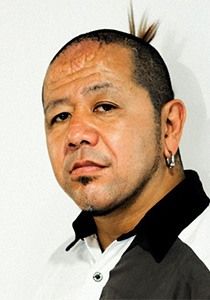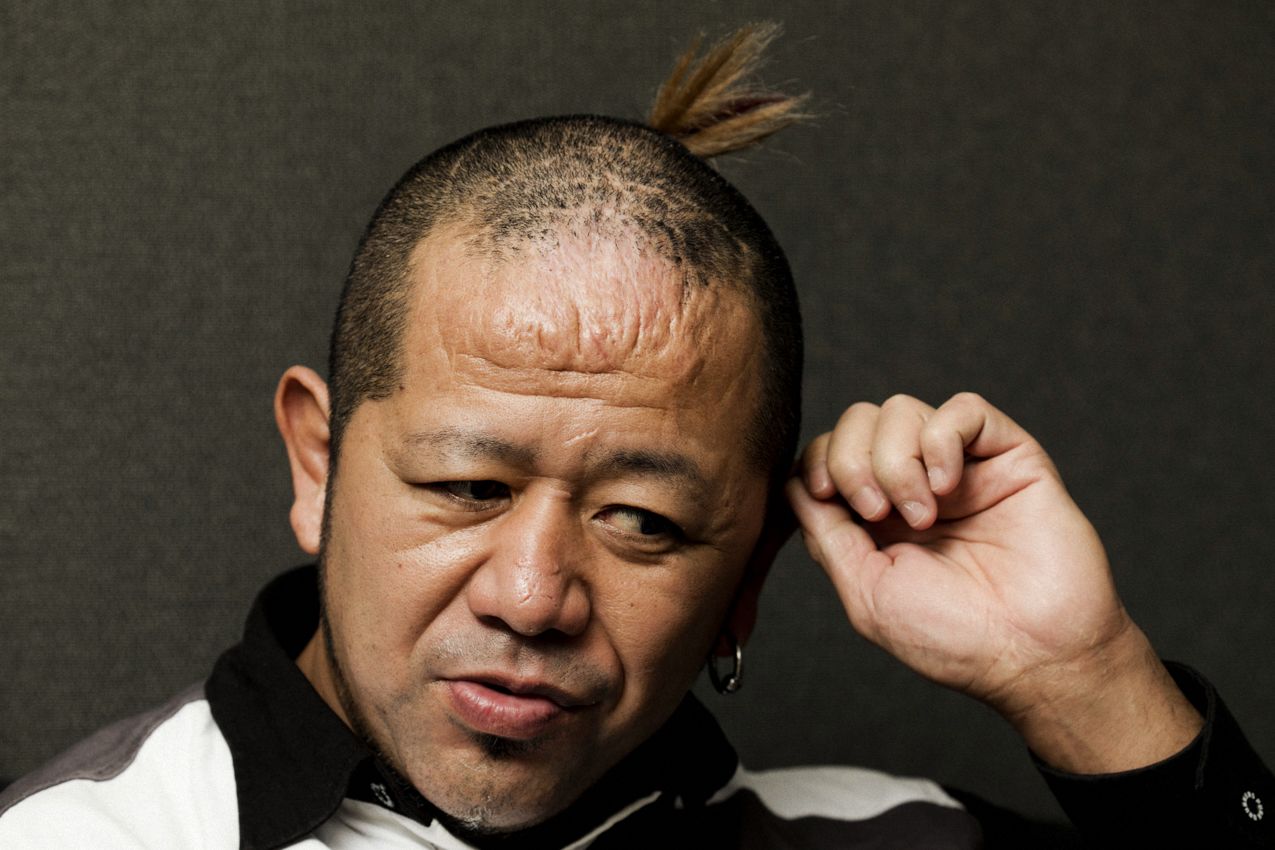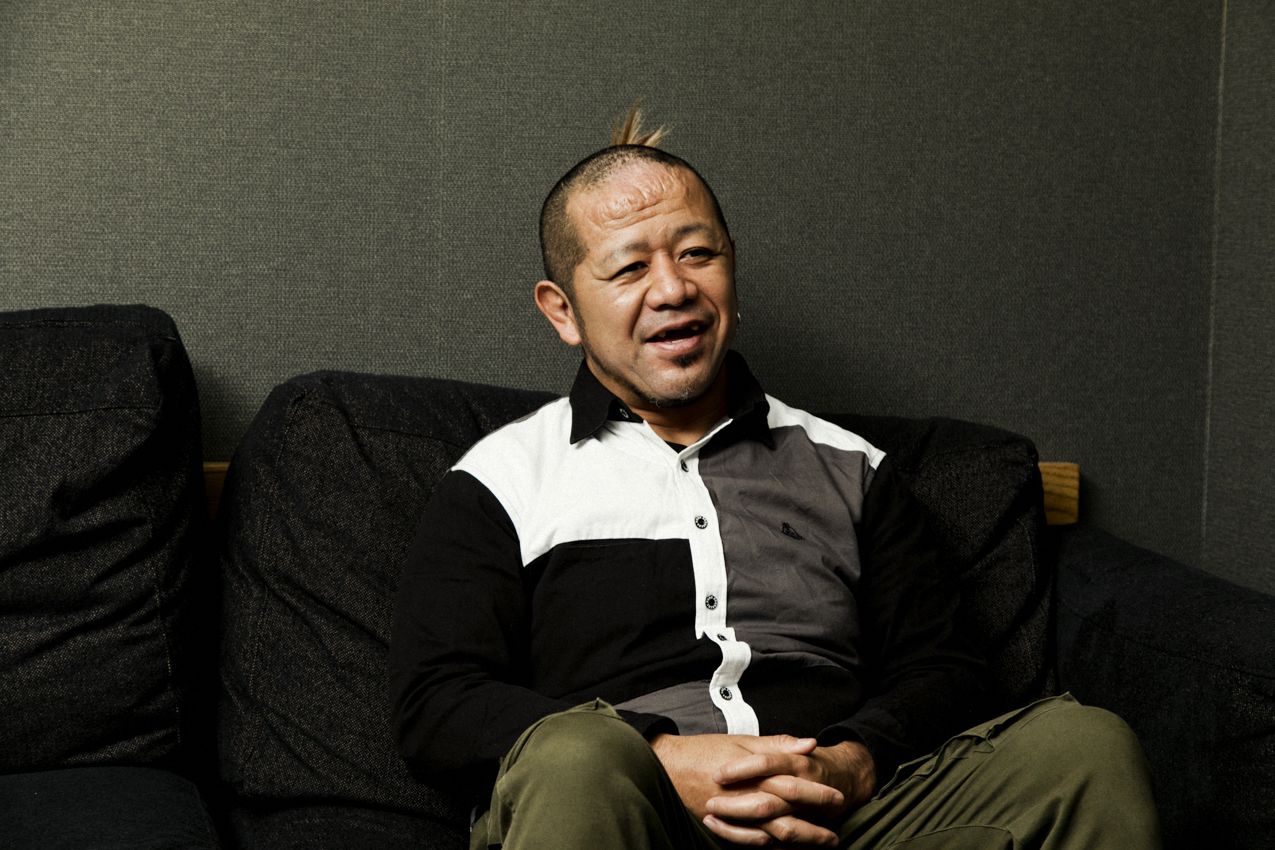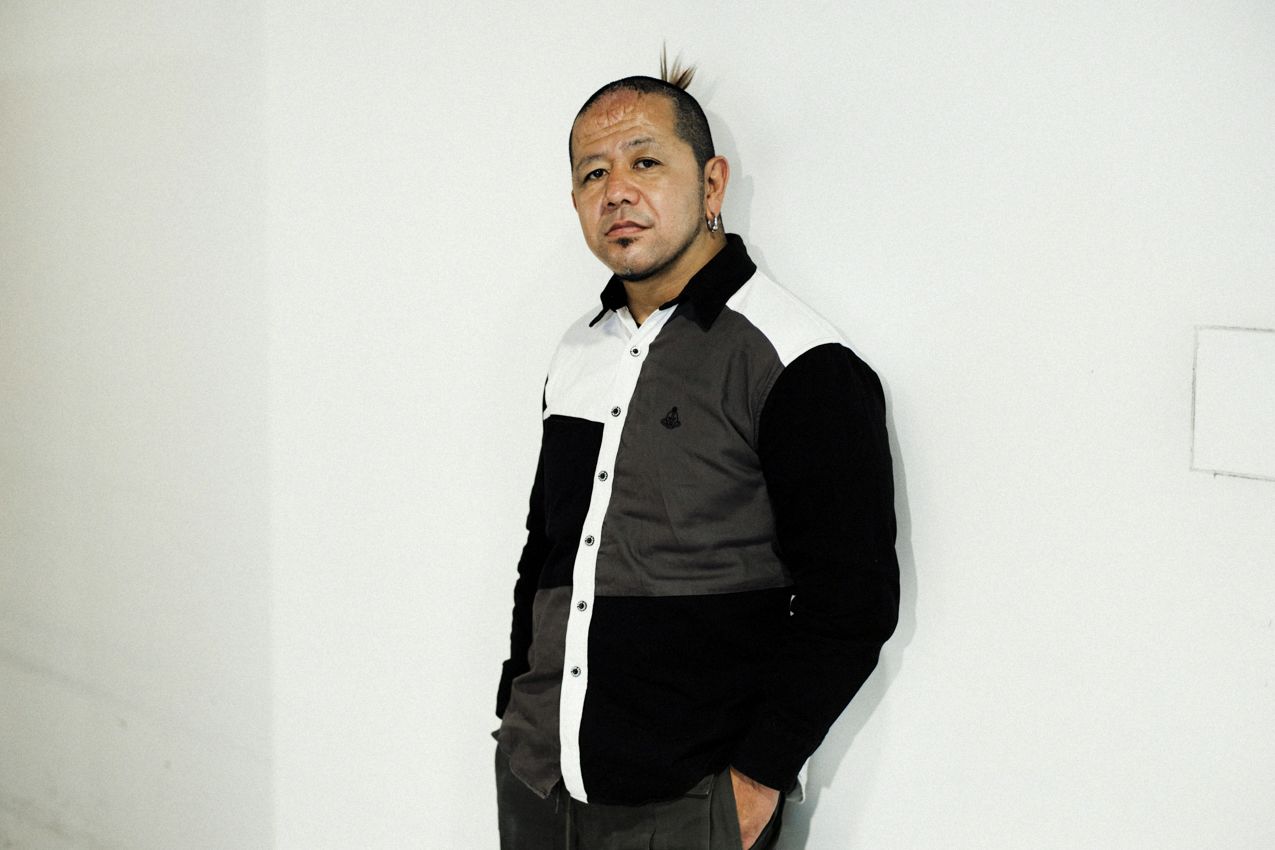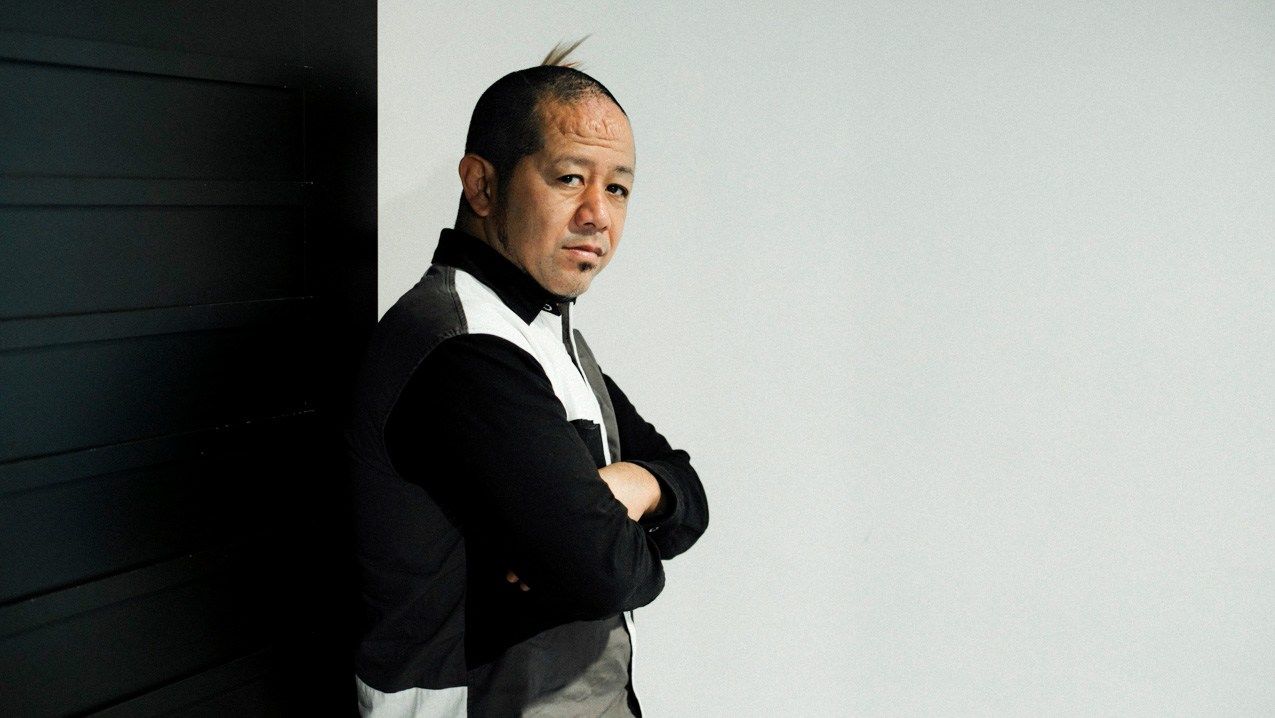
“Kyōen”: Pro Wrestler Kasai Jun Remains the Maestro of Deathmatch
Cinema Sports People- English
- 日本語
- 简体字
- 繁體字
- Français
- Español
- العربية
- Русский
In professional wrestling circles, a deathmatch means anything goes. Wrestlers shatter fluorescent tubes over their opponents heads and fling foes onto mats covered in thumbtacks. Ropes may be replaced by barbed wire and contestants are known to go at one other with razor blades—or worse. The blood flows, both shocking and thrilling the crowd. The recently released documentary film Kyōen, directed by Kawaguchi Jun, looks at the wrestler Kasai Jun, who has specialized in deathmatches for more than 20 years. Below, Kasai shares what it is that keeps him involved in this hardcore form of wrestling.
Boyhood Memories
Like so many children growing up in Japan in the 1970s and 1980s, Kasai was obsessed with the high-flying antics of professional wrestlers. Some of his earliest memories are of watching live broadcasts of bouts with his father on the family television, the senior Kasai sipping beer and his son sitting alongside, glued to the screen. He attended his first live event while in the first grade, a series of bouts staged in his hometown of Obihiro in Hokkaidō by well-known promotion All Japan Pro Wrestling. The athletic spectacle blew him away. He was hooked.
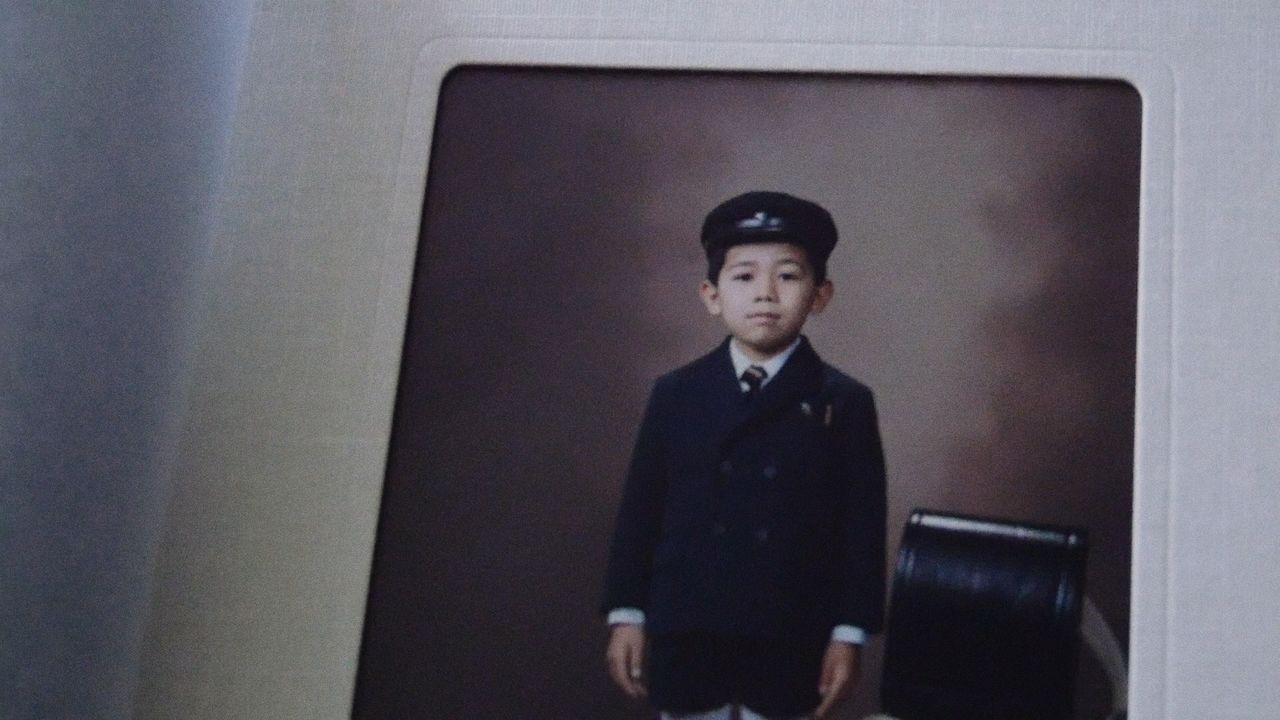
A young Kasai Jun in his elementary school uniform. His love of professional wrestling started when he was a child. (© 2021 Jun Kasai Movie Project)
In those days, Kasai excitedly followed the flamboyant feats of Japan’s larger-than-life wrestlers as they grappled on the mat for dominance, far different from the blood-soaked deathmatches that would come to mark his own career in the ring. Looking back, he traces his path to the extreme quadrant of professional wrestling back to his father’s grumblings over how the sport looked staged. It irritated Kasai to hear his dad scoff at a weak submission hold or decry a wrestler for seemingly pulling a kick. “I remember thinking to myself,” says Kasai, “that if it was me in the ring, I’d make sure my dad wouldn’t find anything to gripe about.”
After graduating from high school, Kasai took a job with a security firm in Tokyo. However, he quit after a short time and returned home. Unwilling to give up on his long-held dream of being a pro wrestler, he spent the interim getting into shape. The next time he traveled to the capital, it was to join Big Japan Professional Wrestling, an outfit specializing in the deathmatch style. Stepping into this niche realm of wrestling, he wanted to make certain that his father would never question whether his bouts were real.
Although Kasai came to Big Japan in good condition physically, his 173 centimeters put him on the small side for a wrestler. At 23, he was also relatively old for a rookie. All this made him seem rather underwhelming. Where he did stand out, though, was in his willingness to give anything a try, no matter how outlandish or dangerous. Every wrestler has a gimmick—an in-ring persona—and Kasai’s unrestrained approach proved to be a hit with fans. Before long, he was one of the biggest draws for the operation.
Stitched Up
In 2001, he made his first tour overseas with Combat Zone Wrestling, an American operation focusing on “ultraviolent” matches. Kasai honed his “Crazy Monkey” persona—the Kyōen of the film’s title—while wrestling with CZW at events in Japan, and the group wanted him to perform his bizarre antics for fans in the United States. Kasai jumped at the chance.
“The American crowds were like nothing I’d ever experienced,” Kasai recalls. He says that Japanese fans are raucous, but that spectators in the United States were dead-set on getting their money’s worth. “It was a whole other level. The wrestlers fed off the energy and ratcheted up their performances in response.”
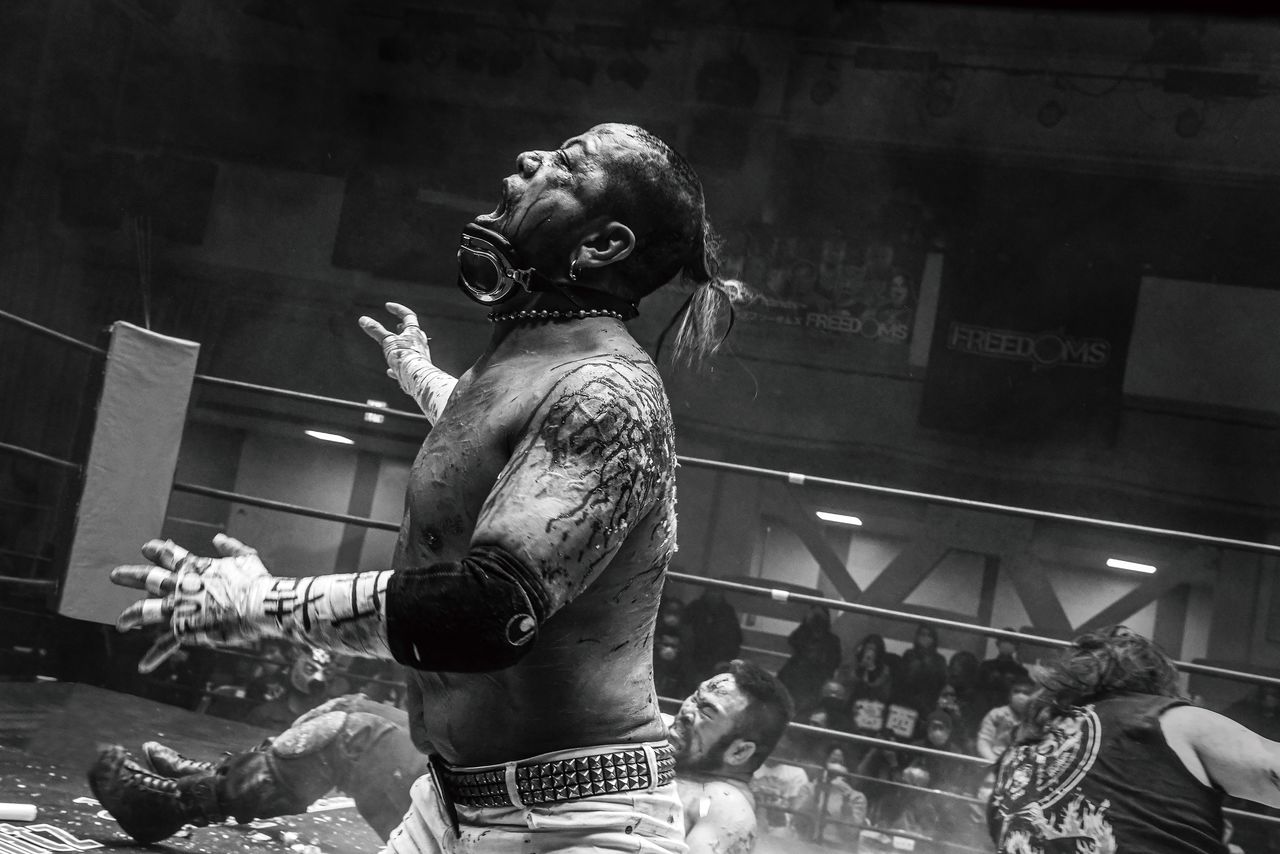
A scene from director Kawaguchi Jun’s documentary Kyōen. (© 2021 Jun Kasai Movie Project)
In deathmatch bouts, though, where rings are battled grounds strewn with twisted metal and broken glass, it can be extremely hazardous for a wrestler to get swept up in the moment, as Kasai painfully learned. During one particularly heated match, a miscalculation resulted in him suffering a massive laceration across his back that required 150 stitches to close. He returned to Japan, but even with his wound, he immediately went to Sapporo to wrestle for an affiliated group and then to his hometown of Obihiro to promote an upcoming event. Stopping to visit his parents, Kasai says he walked through the front door of his childhood home only to have his mother, shocked at her son’s battered condition, begin to cry. It was not quite the homecoming he had anticipated.
The pangs of guilt his mother’s tears produced were not enough to persuade Kasai to give up deathmatch. Armed with fluorescent tubes, razor blades, or some other weapon of destruction, he would trade blows with opponents and then ascend the top turnbuckle, pouncing on his foe amid a gruesome muddle of metal tacks, glass, and blood. Match after match ended with him dyed crimson and flecked with sparkling shards.
Kasai insists that the deathmatch style, when done right, looks far more dangerous than it actually is. “Wrestlers certainly put their bodies on the line,” he says, “but there are techniques at play. You really can’t call yourself a pro if you finish each match laid up in the hospital or end up dead.” Kasai maintains that the gore and chaos is all part of the spectacle. “I may act crazy when in character, but inside I remain cool, calm, and collected.”
Even with precautions, getting hurt comes with the territory. Kasai has missed dozens of matches due to minor injuries and has been sidelined for longer stretches by a ruptured knee ligament and internal organ damage. He says that during such intermittent bouts of convalescing, he sometimes entertains thoughts of retirement, but that once he is back on his feet, the call of the ring proves irresistible.

Kasai hoists newcomer Sakuda Toshiyuki onto his back in a match at Tokyo’s Kōrakuen Hall on July 28, 2020, the first organized by Freedoms at the storied venue since the start of the COVID-19 pandemic. (© 2021 Jun Kasai Movie Project)
“It’s not like I started out to be a deathmatch wrestler,” Kasai insists. “I just grew into it,” a development he attributes to his fans. “People liked what I did in the ring and so I kept at it. Before I knew it, I fell in love with the style. I might not be the most talented wrestlers out there, but no one can hold a candle to my dedication to deathmatch.”
Down but Not Out
In 2019, Kasai had to face that his more than two decades in the ring had taken a toll on his body when he was diagnosed with herniated discs in his neck and back, the result of countless trips to the mat. While taking time off to recover, the prospect that he would have to hang up his wrestling boots for good lingered in the back of his mind.
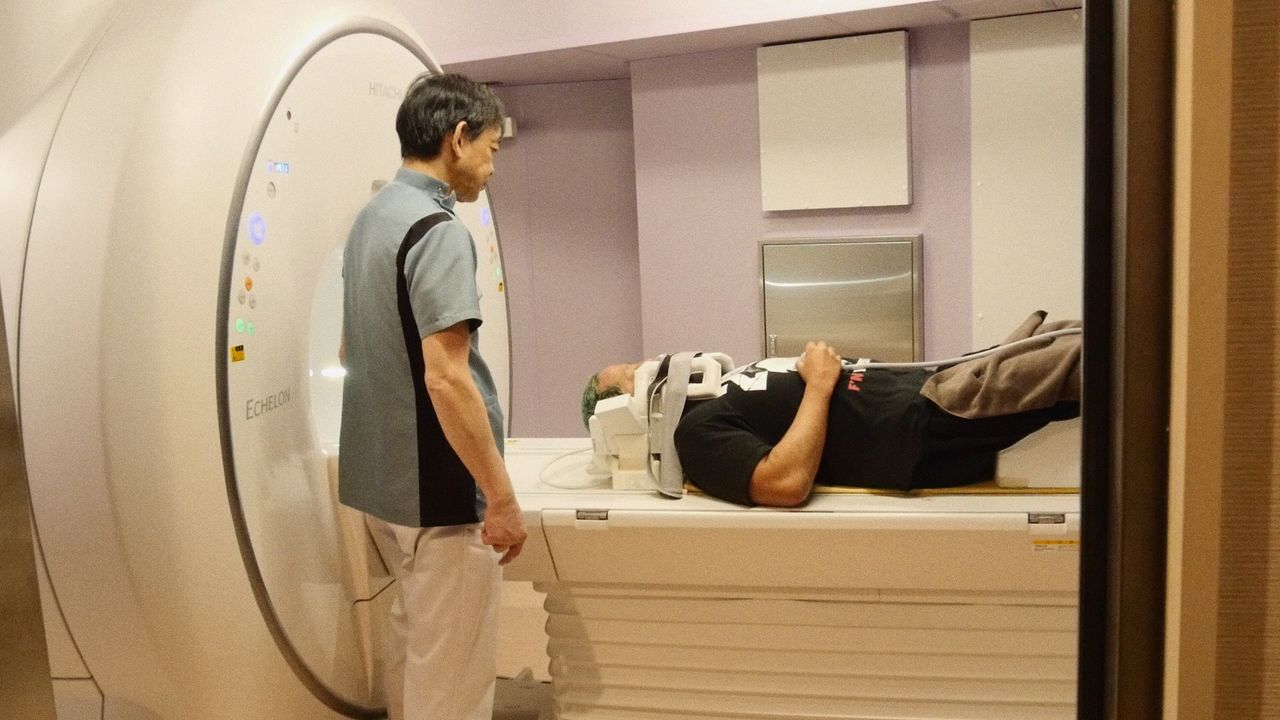
Kasai on the MRI table. (© 2021 Jun Kasai Movie Project)
It was as unsettling experience for Kasai. “With other injuries, there was no way I could wrestle,” he says. “But with my neck and back, I could still force myself into the ring. It was frightening, though, as I had no way of knowing if a sudden bolt of pain might incapacitate me mid-match. It took all the fun out of wrestling.”
The documentary Kyōen open during this period at an event on Christmas Day 2019 at Kōrakuen Hall, Kasai’s last before taking time off to recuperate from his injuries. The film reveals a side of the wrestler normally closed to fans. Unlike the crazed visage of his ring persona, he is shown candidly reflecting on his career and going about his life now suddenly void of wrestling. He appears at times lost in nostalgia, carried off by the memories of his many exploits, and at other moments he wears the concerned look of a family man kept from work.
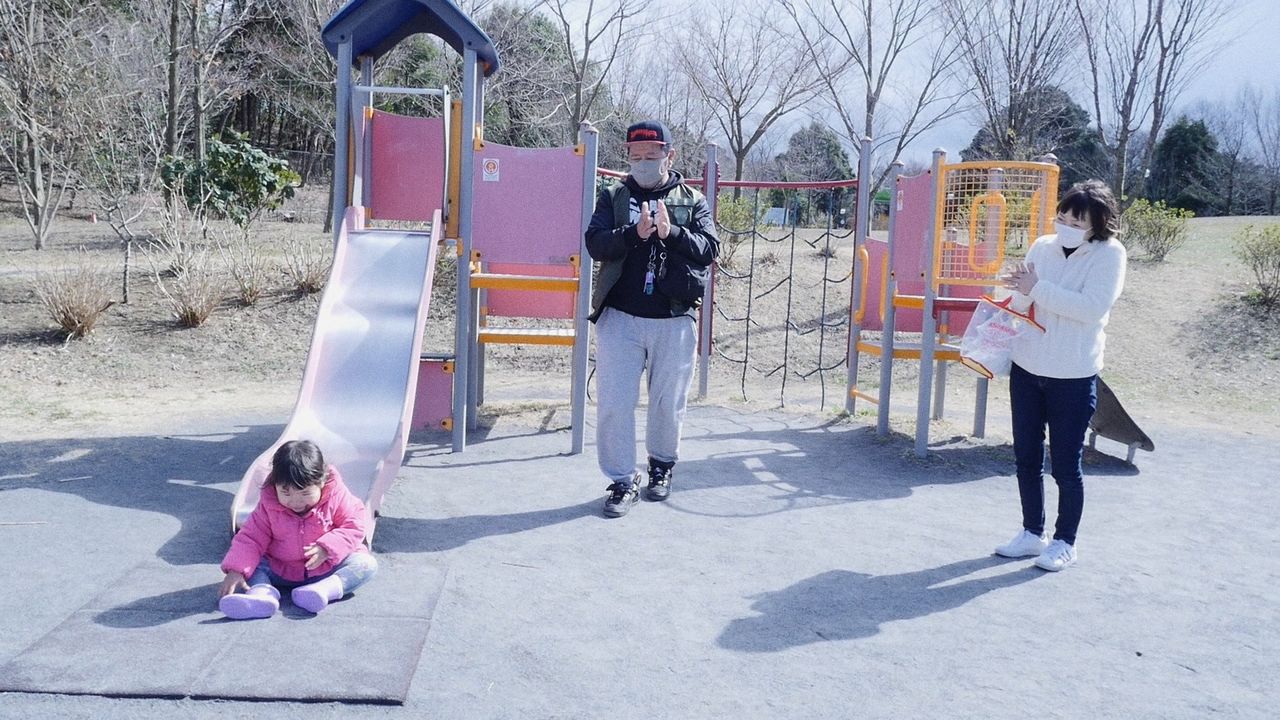
Trips to the park with his daughter were part of Kasai’s daily routine while recuperating. (© 2021 Jun Kasai Movie Project)
In one poignant scene, Kasai, fresh from the MRI table, is visibly relieved to hear the physician give him the green light to continue wrestling. While he was physically mended, though, the fear of another flare-up dulled his desire to stage a comeback. “The drive to reenter the ring wasn’t there,” he recounts. “Unless you belong to a major operator, a wrestler only gets paid for appearing in matches. I knew I had to support my family, but try as I might, I couldn’t muster the energy to wrestle.”
Kasai says his outlook changed when former CZW companion Nick Gage suggested he hold his return match in the United States. “My neck and back were fine, and since I was just sitting around the house all day anyway, it seemed like a good idea. In fact, I started to get really excited about lacing up my boots again.”
Plans for the bout were going ahead when the COVID-19 pandemic brought everything to a screeching halt. Kasai says it came as a gut blow. “Looking at the film footage from that time, it’s pretty obvious I was down in the dumps,” he chuckles. Unsure when he would wrestle again, if ever, he grew languid. “I sat around doing nothing most of the time and spent whole days drinking. I really let myself go.“
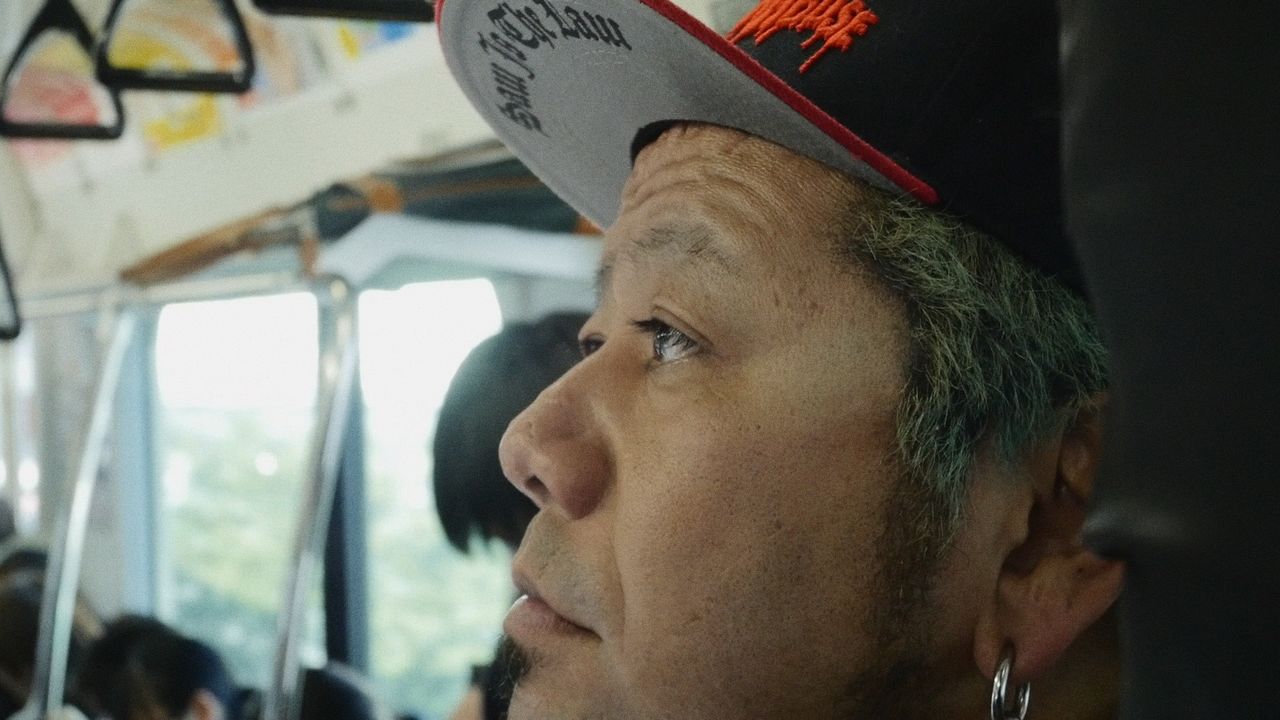
While taking time off to rest, Kasai found that his will to wrestle had waned. (© 2021 Jun Kasai Movie Project)
The Art of Deathmatch
Unable to shake his blues, Kasai entertained thoughts of retirement, even stating at one point that he was content and harbored no regrets. Watching the coronavirus shut down the wrestling world rekindled a familiar fire inside of him, though. Working with other fellow Freedoms wrestlers, Kasai planned his return match.
In June 2020, Freedoms became the first wrestling promoter to hold an event amid the pandemic. The need to follow government protocols for preventing the spread of the virus, however, made for an odd match. The film captures the strange scene of an eerily subdued arena, with masked fans clapping their hands in lieu of their normal wild cheering.
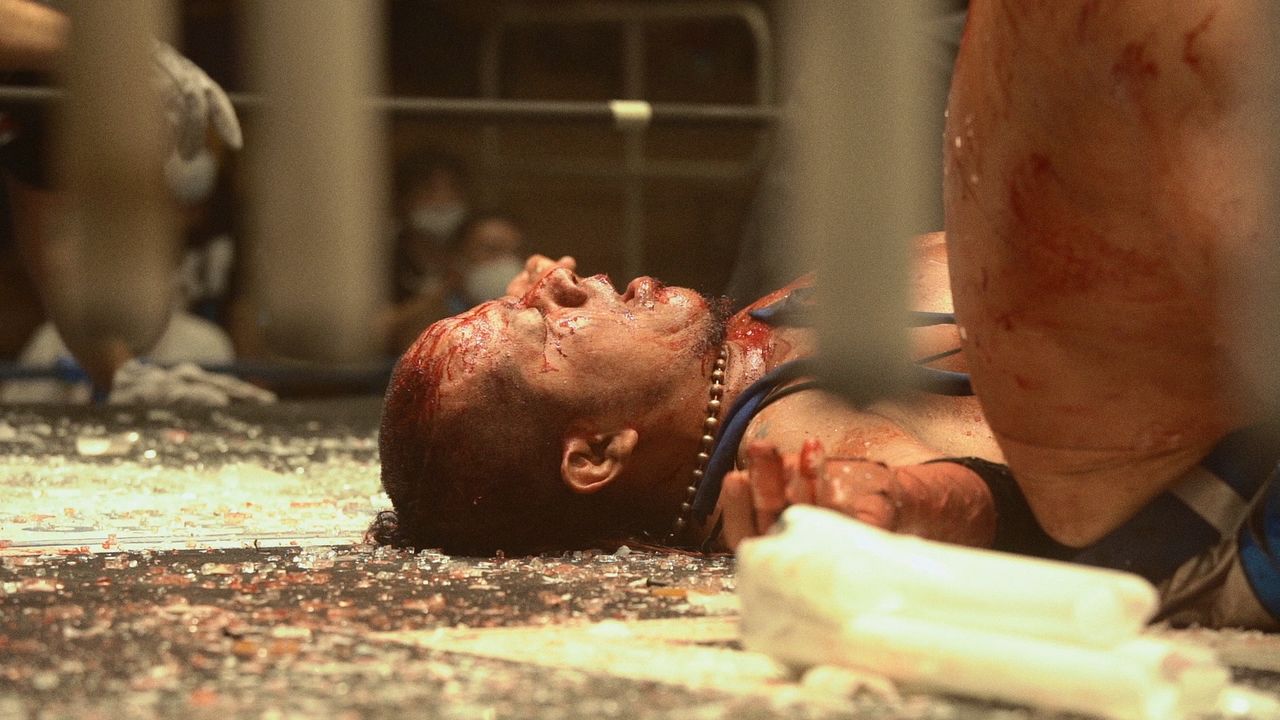
Kasai returns to the ring. (© 2021 Jun Kasai Movie Project)
Kasai found the change in atmosphere unsettling. “Fans typically shout out my name when the flow of the match is against me,” he says. “But there was nothing. I would’ve been happy with even a few folks cheering under their breath.” The event was meant to take people’s minds off the coronavirus, but wound up underscoring its impact on society. Pandemic or not, Kasai remains determined to serve up the best deathmatch bouts he can. “The aim is for spectators to lose themselves in the intense environment. It’s a work in progress and we’ll keep tweaking things until we get it right.”
Having endured the physical demands of his sport for over 20 years, Kasai could have gracefully bowed out with pride. He says his love of wrestling convinced him to remain in the ring. “It’s my life’s calling,” he declares. “To be honest, if I didn’t have deathmatch, I don’t know what I’d do for a living. I’m proud to support my family doing the thing I enjoy most. I’m a lucky guy.”
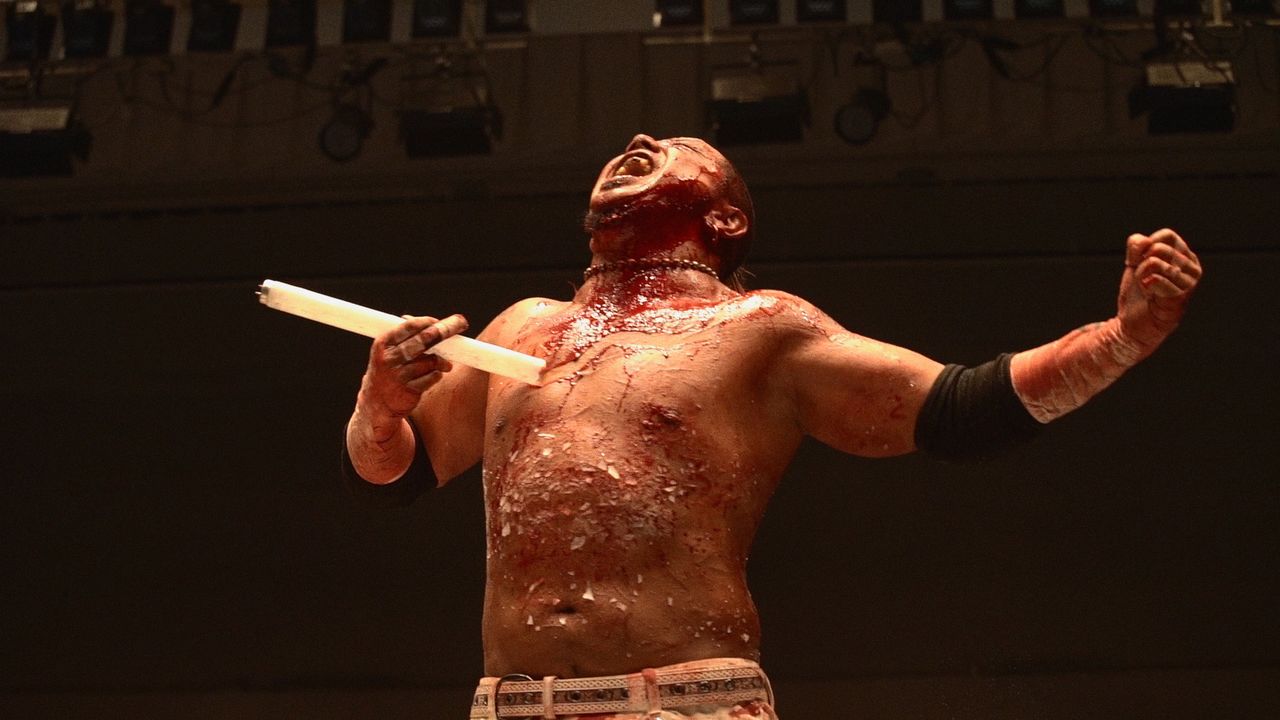
Kasai, covered in shards of glass, holds a shattered fluorescent light. He says that after a match, he simply washes all the pieces off. (© 2021 Jun Kasai Movie Project)
In stark contrast to the pensive first part of the film, director Kawaguchi in the second half of Kyōen focuses his camera on a newly invigorated Kasai. The melancholic expressions, now exorcised, are replaced by the confidence and vitality of the legendary “Crazy Monkey.”
“I feel alive in the ring,” Kasai declares. “Plodding through life, there aren’t many experiences that remind people that they are sentient beings. But standing in a deathmatch ring, cut, bleeding, and in pain, I know I exist. This is the appeal of the style for me. When I get home at the end of a match, I can say to myself that I’ve made it through another day. As long as my body will allow, I’ll keep wrestling.”
Kyōen Trailer
© 2021 Jun Kasai Movie Project
(Originally published in Japanese. Interview photos by Igarashi Kazuharu.)
